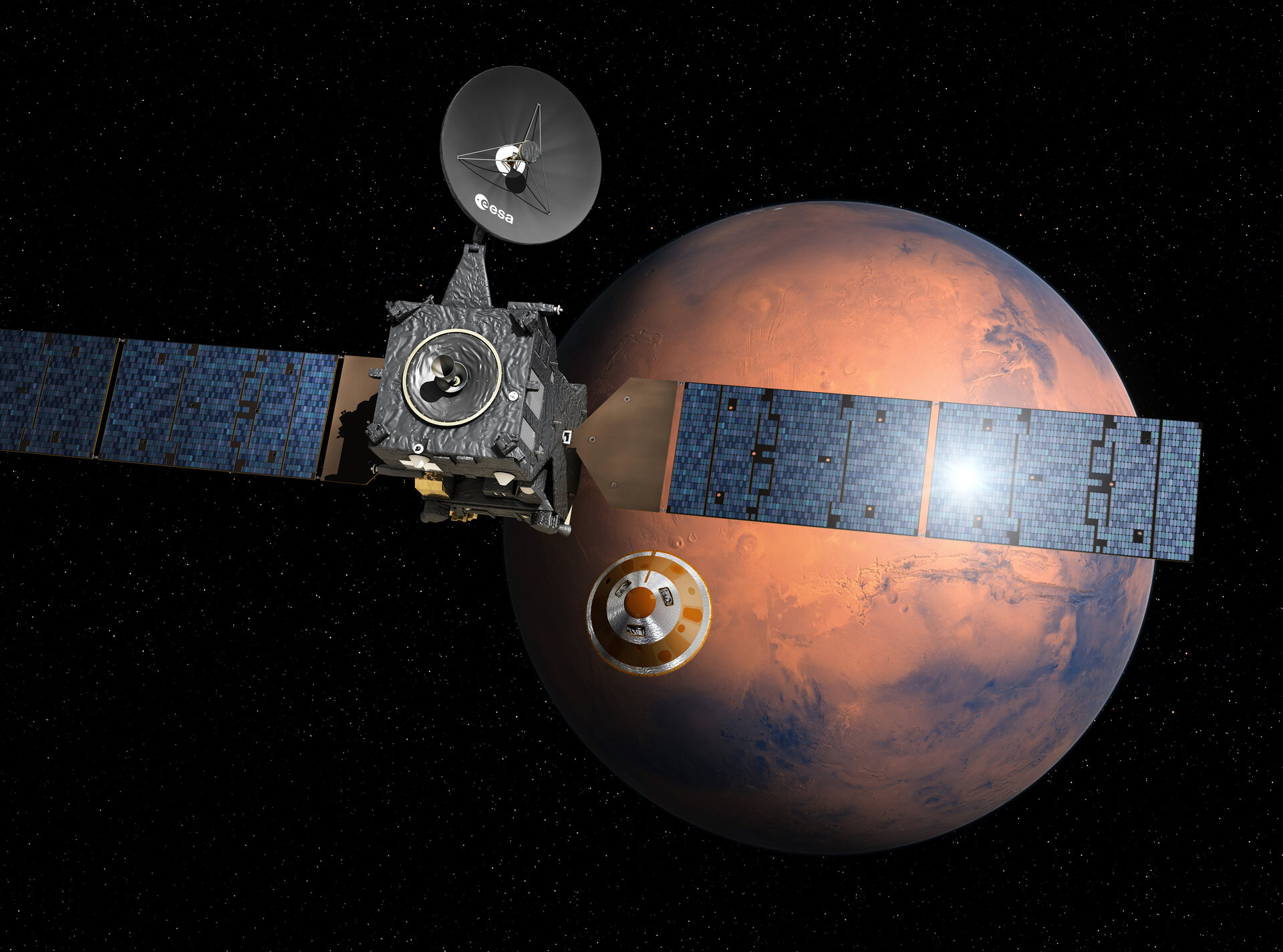Software update offers ExoMars Trace Gas Orbiter a second wind
At the beginning of November, operators at ESOC updated ExoMars Trace Gas Orbiter (TGO) with the latest gyroless software thus maximising its gyros lifetime.
Determining the attitude of a satellite is critical to know the orientation of the spacecraft and point its antennas and instruments in the right direction. Gyroscopes are meant to fulfil this duty but wear out over time. So, how can we extend their lifetime?
To go around this problem, satellite engineers and flight controllers have taken out their metaphoric Swiss Army knife and folded roll of duct tape and come up with a way of getting the similar output without turning on gyroscopes: a gyroless software.
At the beginning of November, the latest update to ExoMars Trace Gas Orbiter’s (TGO) gyroless software was transmitted to the satellite by mission operators at ESOC.
With Trace Gas Orbiter's lifetime extended, the satellite is now ready to support the other half of the ExoMars programme – the Rosalind Franklin rover –targeted to be launched in 2028.
Together they will address the question of whether life has ever existed on Mars. More than just a Mars observation mission, TGO is an indispensable radio relay used by across space agencies for their own Martian missions.
Star trackers as gyros
The gyroless software uses the attitude information provided by the satellite’s star trackers.
Looking at the stars to determine the satellite’s orientation enables the inertial measurement units (IMU) – or gyroscopes – to be activated only when necessary, such as when the star trackers are blinded, during orbit correction manoeuvres or during safe mode.
Engineers at Thales Alenia Space designed Trace Gas Orbiter’s gyroless software with on-board autonomy in mind. Gyroscopes are automatically switched on when the star trackers are blinded and switched off as soon as they are tracking again.
“Contrary to MarsExpress, Trace Gas Orbiter developed its gyroless software early enough to maximise the gyroscopes’ lifetime. With the latest update, we are to extend the IMU lifetime from a few years to decades," explains Peter Schmitz, Spacecraft Operations Manager for Trace Gas Orbiter.



